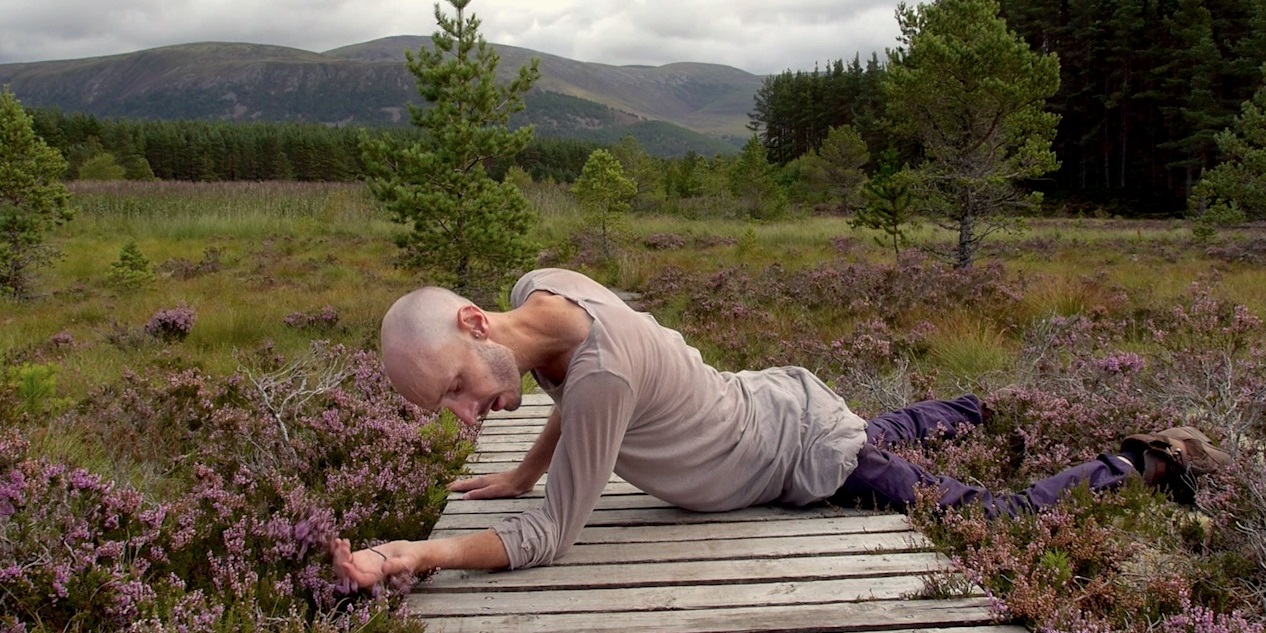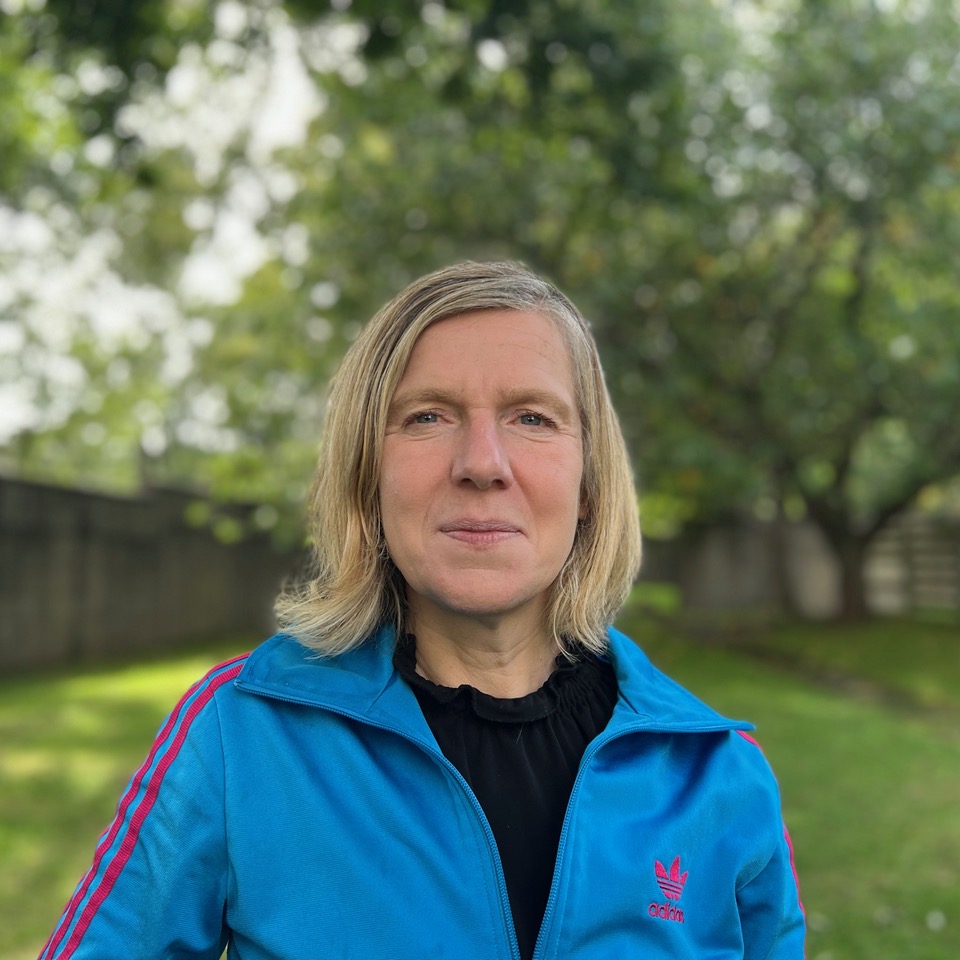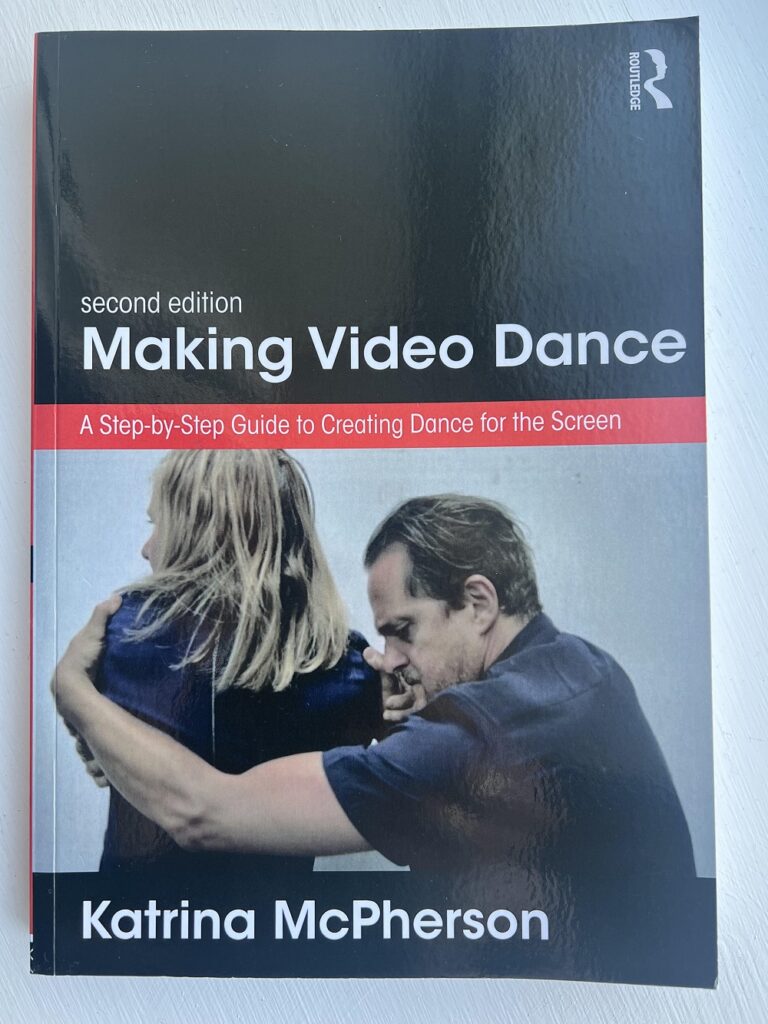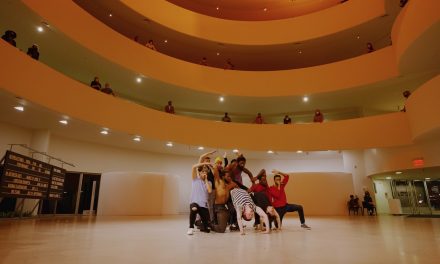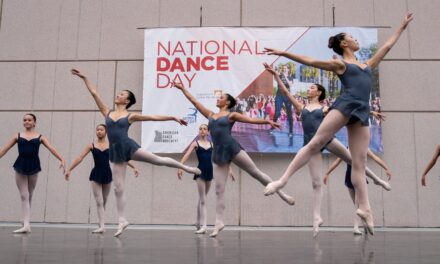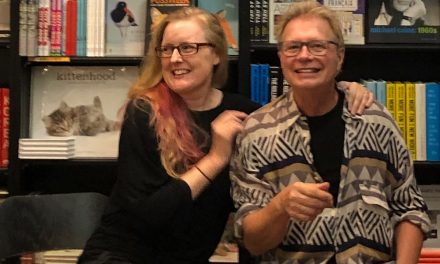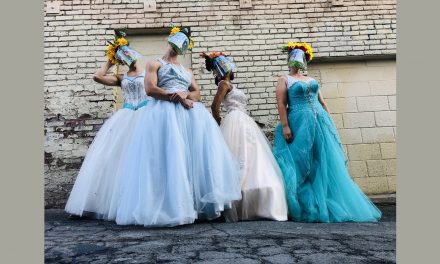From 10:00 am to 4:00 pm on Saturday and Sunday, April 6 & 7, 2024, Dance Camera West will host a two day workshop, Developing Screendance Practice, with award-winning director, screendance artist, and author Katrina McPherson. The workshop will take place at Santa Monica College’s Dance Department Studio located at 1900 Pico Boulevard, Santa Monica, CA. 90405. McPherson has been making work for over 30 years and has collaborated with numerous international dance artists including Sang Jijia (China/Tibet), Crystal Pite (Canada), Marc Brew (UK/US), Harold Rheaume (Quebec) and Kirstie Simson (UK/US) to name just a few.
Films that McPherson has directed, produced, co-directed and often filmed have been seen at festivals, galleries and other venues around the world. Among her many accolades include the Jury Prize for Best Screendance at San Francisco Dance Film Festival in 2011 for There is a Place and Best Screen Choreography at IMZ Dance Screen in Monaco in 2000 for the influential work Moment. In 2016, McPherson was commissioned to make a short single screendance film and 22-monitor screendance installation as part of a residency at the Margaret Morris Archive. In 2019, Katrina became an Associate Artist at Dance Base in Edinburgh and a Dance North Associate Artist. You may read her full biography HERE.
Over the years I have heard dance films labeled as video dance, dance on film, dance for camera so right away I asked McPherson what she calls her films. “Now I call it screendance,” she answered.
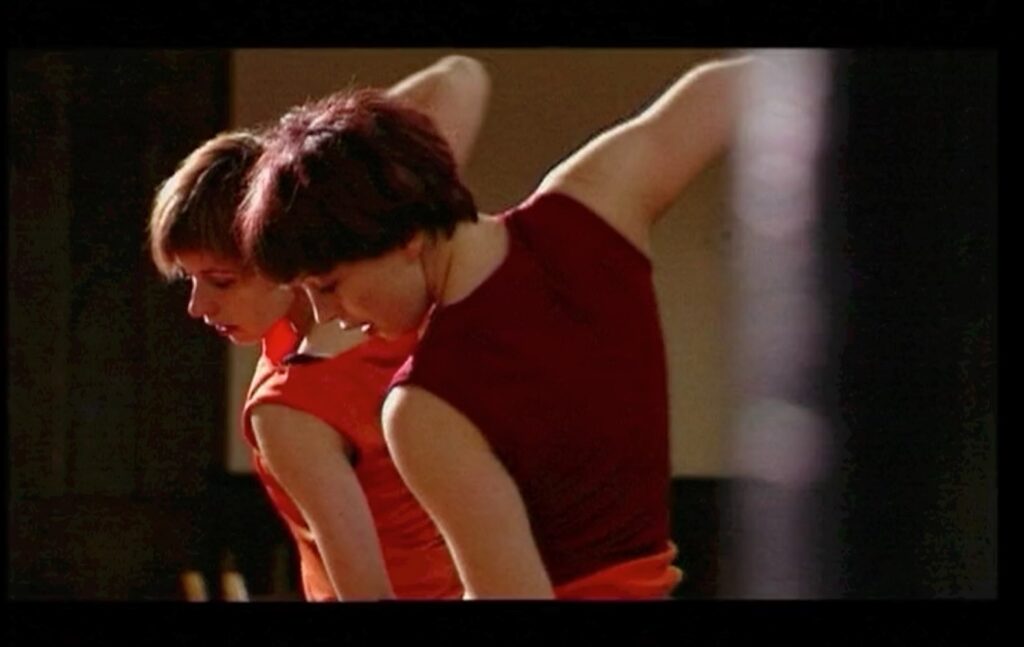
Moment (1998) Director Katrina McPherson – Dancers Jennifer Patterson and Anna Young – Image courtesy of artist.
McPherson began taking ballet classes and later attended the Laban Center in London. At the time, she had not seen many performances either live or documented but became inspired by reading about the post modern practices. She went to the Laban Center wanting to become a choreographer but she did not want to make dances for the same group of dancers all the time. In what she called a sort of naïve and arrogant way, she thought why would one spend their life making dances for the same few dancers. “But it was the thing that propelled me to think that making dance for television was the way forward because that would take dance to a larger audience,” McPherson said. She explained that this coincided with Margaret Thatcher’s (1979-1990) time as Prime Minister in the United Kingdom. It was through Thatcher’s drive toward neoliberal privatization efforts that resulted in at least 25% of television broadcasts having to be made by independents. It was this era when British free-to-air public broadcast television Channel 4 was created and BBC was required to commission works from independent companies. “Little spaces were created for artists to make television or works for television,” McPherson added. It was how Bob Lockyer at BBC was able to work with dance artists such as Merce Cunningham and became a mentor to dance filmmaker Elliot Caplan. It was the mid to late 1980s that short spans of time and budget were provided to commission dance for television, but McPherson stressed that there was still no place for people to go and study making dance films.
“So I thought, well I’ve got to learn how to make video, so I went to art college in Dundee, Scotland, Duncan of Jordanstone which was very renowned for being a center for video art,” she said. It was there that McPherson did her postgraduate in electronic imaging and basically combined her knowledge of post modern dance with her knowledge of video and began making work. She was, in essence, self-taught in the art of making dance for video because this was pre-internet and pre-screendance as we know it today. “There was very tiny pockets of people all over the world, animated by this idea but much less of a network than there is now. Also the technology was much less accessible,” She explained.
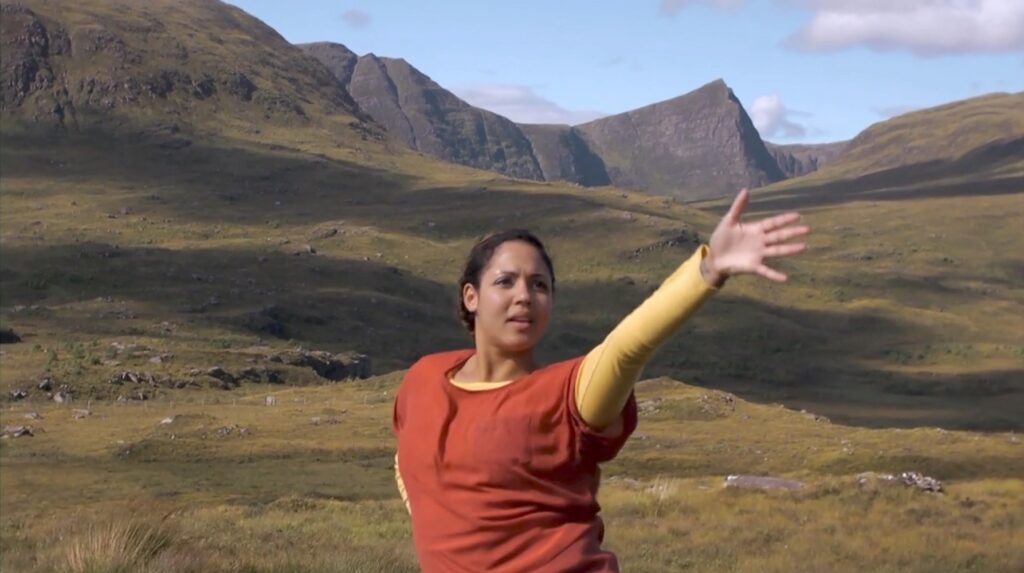
“Away From Here” (2011) Director Katrina McPherson, choreographer Frank McConnell. Dancer Jutta Campbell – Image courtesy of Katrina McPherson.
In order to survive and to learn more about filmmaking, McPherson became a television director, making films for BBC and Channel 4, while making video dance films in her spare time. It was not until the 2000s that the digital technology became more accessible and affordable, that she was able to gain access to nonlinear digital editing cameras. “I really think that it was at that moment when we began to perceive the idea of the artist who films, directs, edits – or maybe collaborates with other people – has the potential to do that emerged,” she said.
Because there was still no place to study making dance videos or films, McPherson began teaching workshops. She told me that she has been teaching how to make videos for dance as long as she has been making them. Of course, the artform and institutions that teach dance filmmaking has expanded greatly.
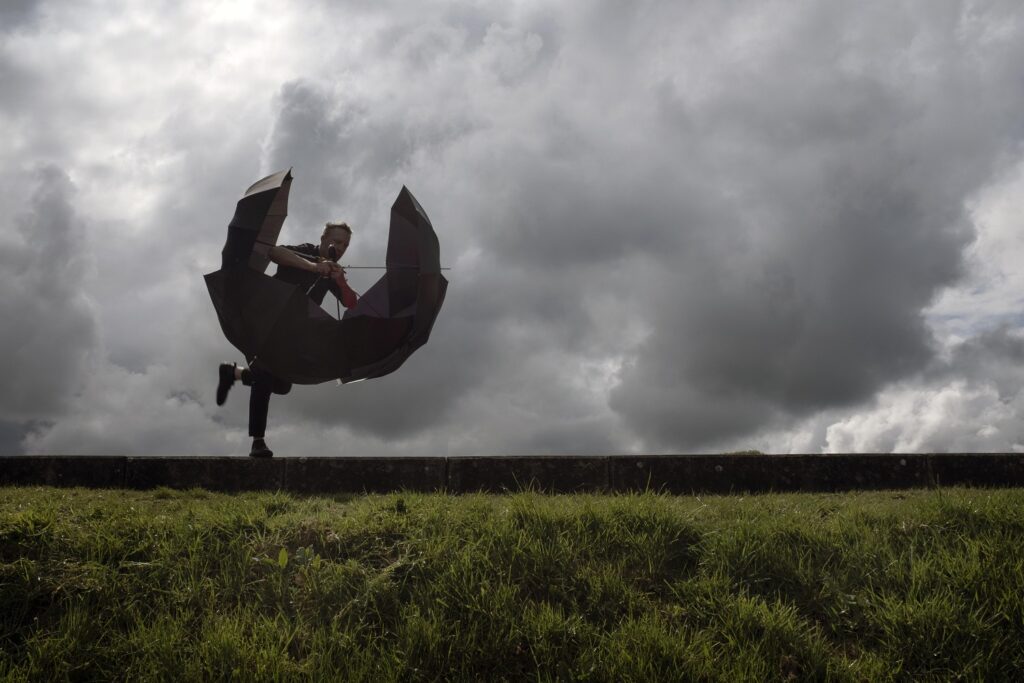
“Water & Man” (2021). Directed by Katrina McPherson and Rob Heaslip – Photo Colin McPherson. Dancer Rob Heaslip.
McPherson and Doug Rosenberg, another artist and educator in the area of screendance, have co-written an extended article for the International Journal of Screendance about the place experimental television video art and video are in the evolution of screendance, and the works that were made during that recent era. “When people talk about the evolution of screendance, they talk much more often about early cinema and Maya Deren, and that kind of avant-garde cinema route, which is absolutely valid,” She said. “We are arguing that the kind of video art and experimental television impulse and legacy is also very, very strong.”
We discussed how so much of the early dance on video has never been seen. One of McPherson’s mentor Bob Lockyer, who she first met in 1992 at the Banff Center for the Arts for a three week workshop, was very supportive of McPherson while she wrote the first edition of her book “Making Video Dance” (2006). The book is now in its second edition (2019), and the publishers have asked her to do a third edition.
“It’s curious because in the interim, since 2006 when the first edition was published, there was very little screendance literature,” McPherson said. Now there are more books on screendance but McPherson stated that they are a more about the theory of screendance. “Making Video Dance” is a step-by-step textbook on how to create screendance. “Absolutely not saying this is how you have to do it but suggesting ways of doing it.”
McPherson will be using “Making Video Dance” as a textbook for the workshop in Santa Monica April 6 & 7 because it is specifically designed to guide people who are coming from a dance or movement choreographic or improvisational background. The book is a basic guide through the stages of making and developing ideas for creating screendance. “Foundational aspects of making this screendance. Are you thinking about the frame, thinking about camera movement, thinking about different approaches to editing, thinking about music, and thinking about the use of sound,” she said. There are a series of exercises that support individuals to develop their ideas as well as to get a better understanding and possibilities of the medium.
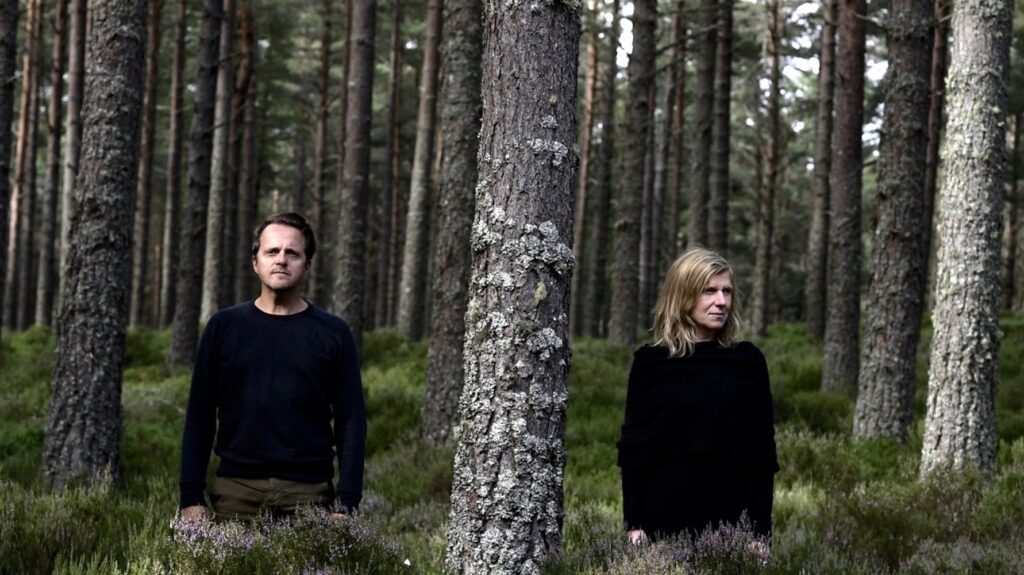
“Paysages Mixtes” (Mixed Landscapes) (2019). A screendance by Katrina McPherson and Harold Rheaume – Image Brain Hartley. Dancers Katrina McPherson and Harold Rheaume.
The workshop will be very much about this as well as gauging where people are, because more and more people have already begun to make screen dances. “It’s gauging aspects of the practice,” she explained. “Asking do they want to develop or can I support them to challenge or think about the work differently.” As is always the case, each workshop consists of different people with different interests and who are in different stages of development in their art or craft.
I inquired if participants needed to bring in videos that they have already worked on and McPherson said no that she generally begins from scratch. It is different when she is doing one-on-one mentoring where a dance artist will come in with an idea or needs help with the editing process of what they already have on video or film.
Participants will have a chance to work with material they have already choreographed , create new movement or to work with improvisation. “In the workshop in Santa Monica we all will start together and work through the exercises and tasks,” she added. “But the particular one in Santa Monica, this time, we have a couple of days together and then I’m hoping that people will go off and make some work or develop something.” Because two days did not feel like it was long enough, McPherson decided to add an online session in May. “Where we can watch what people have done and have a conversation about it.”
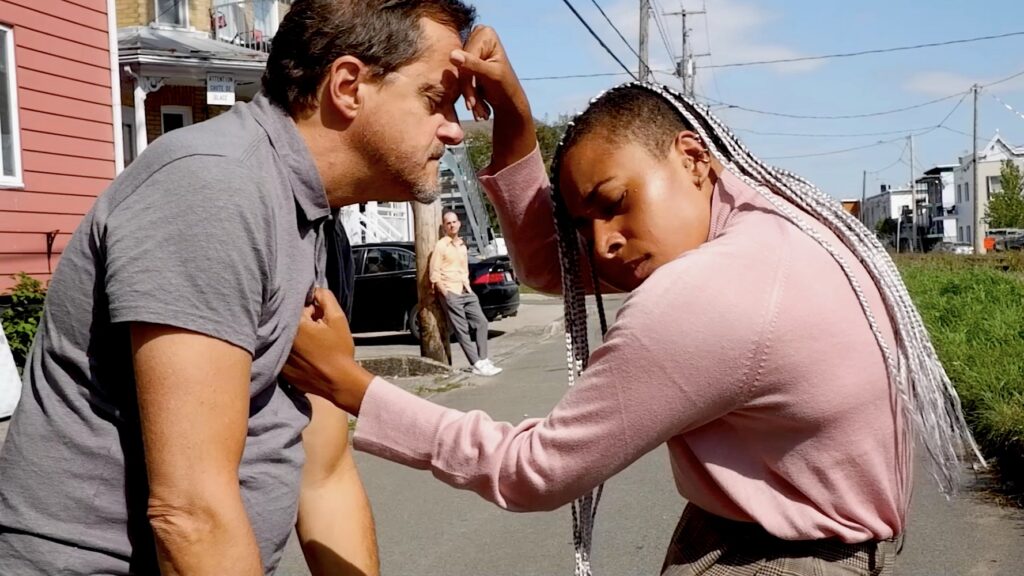
“Still from Solitude” (2022). Directed by Katrina McPherson & Harold Rheaume – Image Katrina McPherson. Dancers Aicha Bastien N’Diaye, Jean-Francois Duke, Lewis Landini.
Even dance artists who come to the workshop having made a lot of work, the types of tasks that McPherson will use helps to draw the filmmaker’s attention to concepts about enabling the performer or performers in relation to the camera, what the relationship between the viewer and performer are through the camera, and how you might work with or subvert action. McPherson will also talk about finding and working on location.
“And also approaches to editing,” she added. “How do you think about that when you’re developing the work and filming the work. I also do a lot about developing scores for the camera or scores for the camera and the performers that bring them into a relationship.”
McPherson said that her process was more formal when she first began making video dance, beginning with movement she had choreographed and working with storyboarding. Also her approach to editing was more about montage than it was continuity of live action. “In fact, I was very inspired by Cage and Cunningham and worked a lot with chance procedure to make choices of the order of edits and the position of cameras.” This lasted about five or six years before McPherson decided it was time to move on.
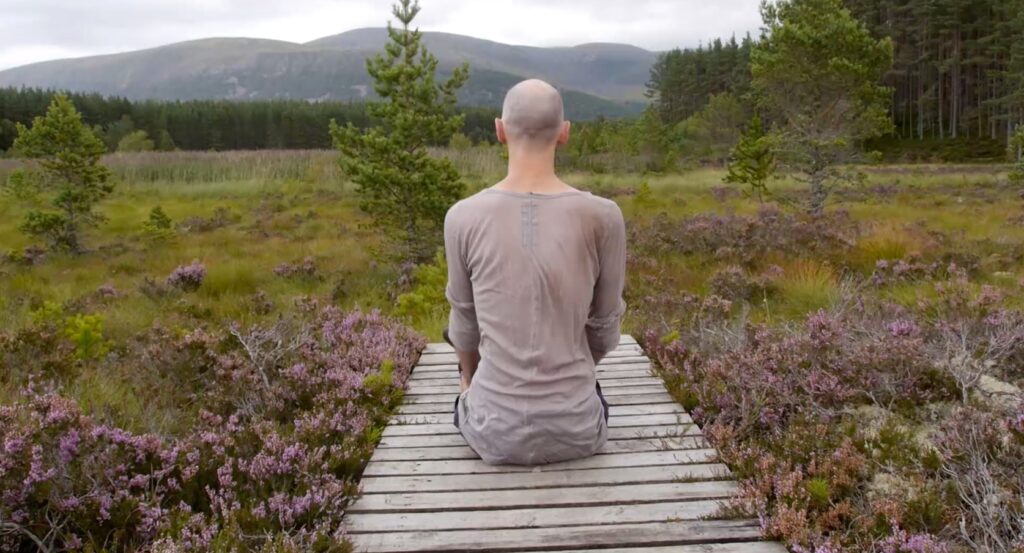
“Uath Lochans” (2015) A screendance by Marc Brew, Katrina McPherson and Simon Fildes – Image Katrina McPherson.
I asked McPherson to please speak to the art form screendance and how it’s become an essential part of choreography and about the skills necessary to making screendance.
“I think it has become in many ways essential as an artform,” she began. “Fifteen years ago we were all grappling with the sort of term to use. Video dance, in many minds, is very related to the format of video as oppose to film dance which was very popular in the ’60 and ‘70s, so this term screendance came about as a kind of umbrella term.” She explained how it has been very helpful in combining many different types of work as well as that of films that exist at the edges of screendance. “But the flip side of that is often this term can lack a clarity of intentionality of what is it that you are actually doing with your screendance.”
McPherson generally begins her workshops with the question of what is the intention of your work. Is it actually a documentation, transferring a live event to the screen? Is it an experimental form and its purpose is to push the boundaries of that form? To McPherson, being clear about one’s intention when making a screendance is actually one of the necessary skills a filmmaker must have.“What also speaks to fundamental skills is the skill of being able to be clear of ones intention and I don’t mean that as in you have to know exactly what the work is about or looks like or how it will land or be interpreted,” she said.
Another foundational skill is thinking about the ability to reconsider space and time. “It’s going to be experienced usually on a single screen and it’s going to be experienced usually linearly, and yet it’s having the potential of a nonlinear structure,” McPherson said. “I talk a lot about how space is different because we can move all around the performer. What’s outside the space is as important as what’s inside the frame.” Filmmakers can move through different spaces or flip backward and forward in time unlike live performances. “With screendance, that’s how we make something that is uniquely screendance as opposed to a documentation of a live performance.”
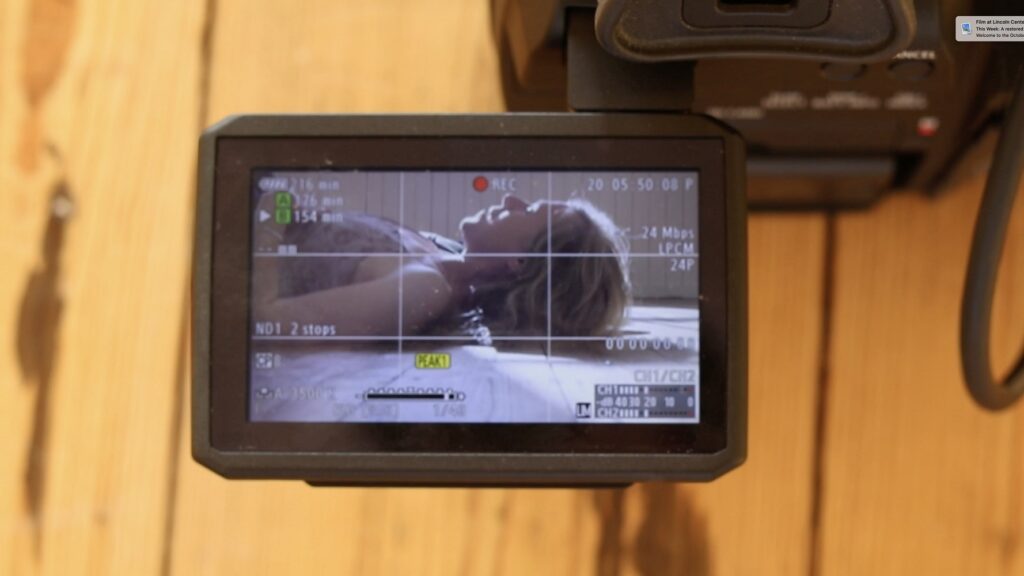
“we record ourselves” ( 2016) A screendance by Katrina McPherson, Simon Ellis and Natalia and Owa Barua – Image by Katrina McPherson.
One more essential skill in making screendance is to not be bound to the real event and to be drawn to what is important in the image of what one is creating. McPherson said that this is always the tension between a live choreographic work and a screendance work. At the beginning of all her workshops, the participants begin without cameras. This is about how it feels being watched and moving while being watched. “I always want to start with the body rather than the camera.” It is about getting used to communicating with each other and comfortable moving with one another.
“One of the definite positives about the present is that we’re having people coming from all over the world with different dance backgrounds so they’re coming up through different dance styles,” McPherson said. “It is an international artform but it also has its local specifics as well, which is important.”
McPherson and I talked for a little over an hour and there is not room in this article to cover it all. I therefore I suggest that one either register for her workshops and/or purchase her book “Making Video Dance.”
Again, Katrina McPherson’s Developing Screendance Practice workshop is April 6 & 7, 2024 from 10 am to 4 pm at Santa Monica College’s Dance Department Studio located at 1900 Pico Boulevard, Santa Monica, CA. 90405. For more information and to register if there are spaces left, please click HERE.
To learn more about Katrina McPherson, please visit her website.
Written by Jeff Slayton for LA Dance Chronicle.
Featured image: Uath Lochans (2015) A screendance by Marc Brew, Katrina McPherson and Simon Fildes. Image by Katrina McPherson.

